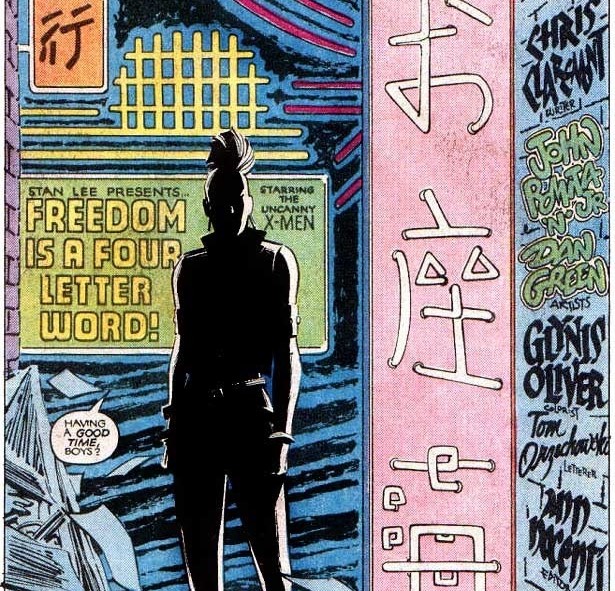In the wake of an epic volcano collapse, UXM 114 starts out with a simple scene of Hank and Jean trapped in an Antarctic blizzard. Brief though it is, the scene highlights a depth of skill and craftsmanship by all creators involved, achieving a rare emotional impact. #xmen 1/12 

The opening splash shows a haggard-looking Hank fighting the elements with Jean in his arms. In true Will Eisner style, the hill Beast is climbing forms the stylized title of the issue: “Desolation.” Ice crystals form all across his fur and his face is mired in shadow. 2/12 

The previous issue had ended with Hank’s strength failing, causing him to collapse in the snow. The opening splash thus portrays his heroic second wind. Claremont’s narration accentuates this by highlighting Hank’s indomitable will within an utterly doomed enterprise: 3/12 

“He should have died hours ago. In fact, he almost had, lying face-down in the snow, sleeping his life away. But something deep within forced him to his feet, forced him to pick up the girl, forced him to start walking across the Antarctic Wastes.” 4/12 

“It would have been so easy to stop. But he didn’t. Hank McCoy, Avenger. Jean Grey, X-Man. They need only one thing to survive this night…A miracle!” Interestingly, the choice to list their full names and professions connotes an obituary. 5/12 

The reader is primed for this death imagery through the flagrantly misleading (maybe delightfully so) cover which seems to portray a wake and shows all but Hank, Jean, and the Professor as ghosts with the caption “The Day the X-Men Died!” 6/12 

Though beautifully pencilled by Byrne and starkly inked by Austin, the MVP of the scene has to be Glynnis Oliver whose myriad of deep blues and then brilliant yellows against the black backdrop create a viscerally immersive blizzard. 7/12 

The juxtaposition of fire and ice is also poignantly felt – to escape from lava only to find yourself freezing to death in the dead of night. This dichotomy is revisited when Jean’s fire and light come alive to save them, made all the richer through the contrast. 8/12 

That starkness then informs Jean’s reaction to waking up: immediately summoning unfathomable power in a desperate bid to find her teammates. Though she’d later explain that it’s the X-Men she wants to find, her first reaction is to scream “Scott” alone. 9/12 

As rescue arrives, Hank pleads with Jean to accept the unthinkable – the X-Men are dead. Turn the page, however, and the truth is revealed, but seeing the depth of Jean and Hank’s grief – which is not resolved for months - keeps the scene from feeling cheap or misleading. 10/12 

This transition is also important structurally, signalling a deviation from the compartmentalized story arcs that dominated comics of the time, and still today. Magneto is gone, but the story will just keep moving, first to the Savage Land, then to Japan, then to Calgary. 11/12 

All combined, it’s a simple scene with a remarkable volume of craft and innovation on full display. Every piece of the machine connects to create a brief harrowing moment of grief and despair and acceptance that informs the characters and scenes to come for months on end. 12/12 

• • •
Missing some Tweet in this thread? You can try to
force a refresh






















